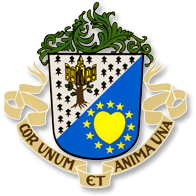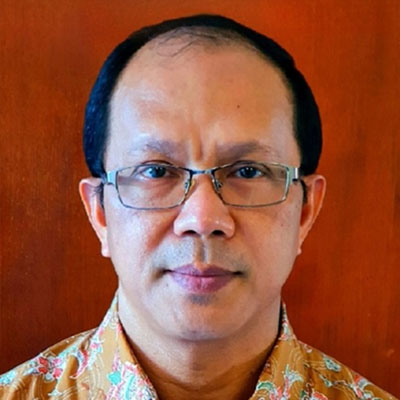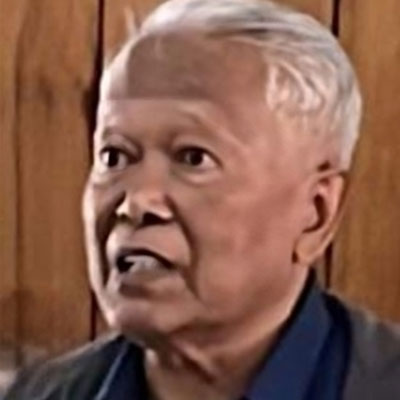 by Charles Phukuta, cicm
by Charles Phukuta, cicm
Superior General
This is an article written by Charles Phukuta based on his interview with Vatican Radio in Ulaanbaatar during the visit of Pope Francis in Mongolia.
What is the history of CICM Mongolia?
The beginnings. The Mission of the Church entrusted to CICM in Mongolia can only be well understood if we take a closer look at the history of the Catholic Church in the country following the fall of communism. During the communist era, religion was banned, and for more than seven decades, all traces of religion were systematically eliminated. The Church could not be admitted to Mongolia.
The outer Mongolia ‘‘Sui Iuris’’ mission was established on March 14 1922. In 1924, it became the Urga ‘‘Sui Iuris’’ mission and was entrusted to the CICM. Unfortunately, the instauration of a Soviet-like system made it impossible to start the mission.
It was only after the Berlin wall came down and the Soviet Union came to an end that Mongolia adopted a new constitution and opted for freedom of religion in February 1992. One month later, the Holy Sea established Mongolia as a ‘‘Sui Iuris’’ mission. In April of the same year, diplomatic relations were established between the Vatican and Mongolia, as requested by this new democratic country. The then Papal Nuncio to Korea, Bishop Giovanni Bulaitis, was appointed nuncio to Mongolia.
Then, the vineyard of the Lord was ready for the arrival of the first three CICM (Congregatio Immaculati Cordis Mariae) missionaries on July 10, 1992, following a bilateral agreement between the Holy See and Mongolia. It's important to note that CICM is present in Mongolia because the Holy See wanted it that way, rather than CICM decided to be the first religious congregation to arrive in the mission field. The mandate for the mission was received from the Vatican.The first group comprised Wenceslao Padilla, 43, Gilbert Sales, 30, and Robert
Goessens, 64. Pope Saint John Paul II appointed Bishop Wenceslao Padilla, cicm (may he rest in peace), as the first bishop of Mongolia. It's good to know that 9 of our confrères are continuingthe work begun in 1992 by the pioneers.
Propagation of the Catholic Faith by CICM. It's fascinating how the first missionaries were able to pique the interest of locals who encountered them. The people who saw their work started asking questions and became active in the Catholic Church. They were invited to participate in the Catholic Community's liturgy and activities, which helped them gain a deeper understanding of the faith. What's impressive is that in a non-Christian nation where aggressive
evangelization is not possible, the missionaries and the baptized Catholics give witness to their faith primarily through their lives, their words, and deeds. It's interesting to know that doctrine classes began in 1994 when more Mongolians started attending liturgical services. There was a growing interest among them to learn more about the Catholic faith, resulting in a few people converting. In 1995, on Easter, 14 local people were accepted into the Catholic fold after completing a year of preparation. Subsequently, it has become a tradition to baptize small groups of Mongolians every Easter, and the total number of Mongolians received and baptized is gradually increasing.
Faith Communities and places of worship. The Church's early years were quite nomadic (like the Mongolians themselves) as the location of liturgical celebrations kept changing to accommodate the size of the congregation. It shifted locations multiple times before finally settling on the second floor of the Catholic Church Mission Center. It was there that Saints Peter and Paul's Parish, the first parish in Mongolia, was officially established in 1996, before the construction of Saints Peter and Paul Cathedral. For a number of years, from 1996 to 2002, it was the only parish in the country.In the autumn of 2001, preparation of the grounds began for the church began. However, progress was slow due to the need for additional funding. It wasn't until August 2003 that the church, even though it was still unfinished at the time, was inaugurated by His Eminence Cardinal Sepe, H. E. Most Rev. Giovanni B. Morandini, Apostolic Nuncio for Korea and Mongolia, and H. E. Msgr. Wenceslao S. Padilla, newly consecrated bishop. It is now known as the Saints Peter and Paul Cathedral.
In March 2003, another parish, the Good Shepherd Parish, was erected in the 10th Micro-District of Ulaanbaatar City. In doing so, we have established the first local ecclesial structures and fostered the emergence of the first Mongolian priest ordained in 2016.
What are the works of CICM in Mongolia?
Social work: Verbist Care Center (VCC). The CICM missionaries started working with the street children of Ulaanbaatar in 1994, visiting them where they usually congregate in the evenings, providing them with food and first aid, trying to get to know them, and learning about their conditions and problems. A shelter home for these children was opened in August 1995. Verbist Care Center for Street Children has now grown into a house for 120 street children, providing them with a home and education. Since its creation, some 1,700 children have benefited from our free care. This year, the home welcomes 46 children. This means that the level of poverty is gradually decreasing.
Educational Apostolate. My Home Kindergarten (MHK), run by CICM, was started in Erdenet in 2002, catering to the poor children in Erdenet, the 3rd largest city of Mongolia, 385 km Northwest of Ulaanbaatar. MHK was established to assist underprivileged children whocould not attend public kindergartens due to financial constraints. Children from disadvantaged backgrounds are our primary focus. Our goal is to give them solid academic foundation and unlock their potential through the Montessori education system. Our project incorporates a feeding program, medical assistance, family awareness-raising, and a library to achieve the best possible outcomes.
Antoon Mostaert Center (AMC). In 2003, a Center for Mongolian Studies was founded under the name Antoon Mostaert Center (AMC) to reach out to Mongolian intellectuals. At this Center, research is conducted in humanities and social sciences. AMC was established to pay tribute to Antoon Mostaert, cicm (1881-1971), and his unwavering commitment to protecting and disseminating Mongolian history, language, literature, religion, and culture through publications and conferences and providing a library of 11,000 books for the public. The Antoon Mostaert Centre was established by CICM almost two decades ago as a university-level academic institution specializing in social sciences and humanities. Its mission is threefold.
1. To study and promote the work of Antoon MOSTAERT, cicm (1881-1971), our confrere and an eminent Mongolist who lived and worked in Inner Mongolia (China).
2. To assist in the progress of Mongolian traditional studies by providing necessary support.
3. To assist and develop students' research projects in particular.
As a result of our efforts, a fourth goal has emerged indirectly: to assist the Mongolian Catholic Church whenever expertise is needed.
It’s impressive how the AM Center has mentored young researchers for almost twenty years, and over 250 becoming outstanding researchers, teachers and parents. The Center's fellowship program for M.A. degree candidates in Mongolian Studies has been ongoing since 2014, and their research is published annually. The program mainly focuses on teaching research methodologies to students studying social sciences, humanities, and other academics. This year, the Student Research Program saw 12 exceptional graduates, including three in literary studies, one in anthropology, three in archaeology, and five in linguistics.
We have a core of 4 values that guide us in our work:
- Respect for the Mongolian culture and tradition
- Support for scholars and their creativity and scientific inquiry
- Protection of academic freedom and adherence to research ethics
- Maintenance of integrity and unity
What does the Holy Father's visit represent?
A source of spiritual joy and a sign of hope, faith, and charity. For some Mongolians and CICM, the visit of the Holy Father is a great privilege and a source of happiness. They appreciate Pope Francis' commitment to the peripheries and marginalized or neglected Catholics. It is heartening to see that the Pope is following through with his words, and many Catholics see it as a powerful expression of love. It's worth noting that if Pope Francis doesn't come to Mongolia, it's unlikely that another Roman pontiff will visit anytime soon, given the country's tiny Catholic population and lack of influence.
A sign of brotherhood and peace. Receiving a visit from the head of state of the Vatican is a significant achievement for Mongolia's strategic positioning in Central Asia and the world. It is a testament to the country's political leaders, who have always been known for their tolerance, hospitality, and acceptance of diversity.
Historians have attested that the Mongol Empire was known for being highly tolerant of diverse beliefs and customs in the societies it ruled. It is said that at the court of the Mongol Khans, leaders of various religions such as Buddhism, Islam, Christianity, Judaism, and Confucianism, as well as local shamans and healers, would convene and engage in discussions and exchange of ideas.
CICM strongly believes that the visit of the Holy Father will pave the way for a deeper understanding and acceptance of the Catholic Church's diverse charisms, thereby preventing any possible misunderstandings. Moreover, it presents an opportunity to encourage the development of religious vocations, particularly those that address the local needs.
Source : Chronica No. 5 Sept-Dec 2023
https://www.cicm-mission.org/index.php/en/cicm-audio/44-reflections/563-cicm-mongolia-and-the-visit-of-pope-francis#sigProId22a7be039c










